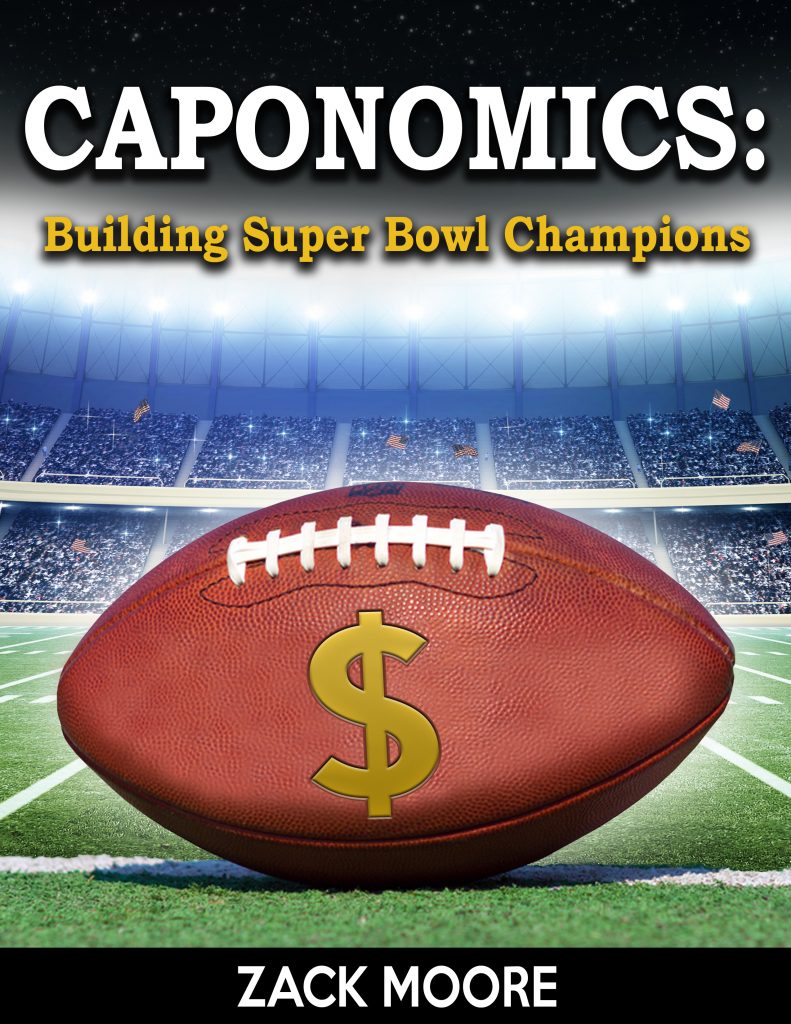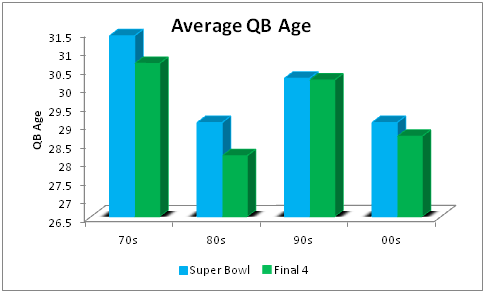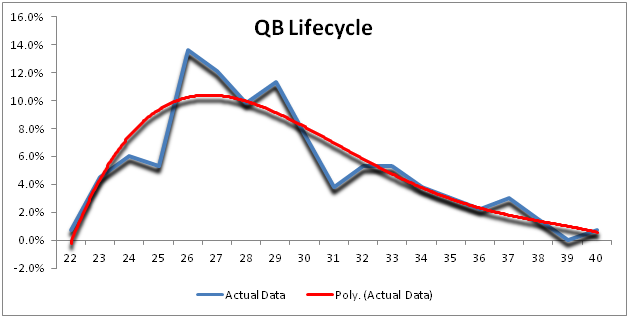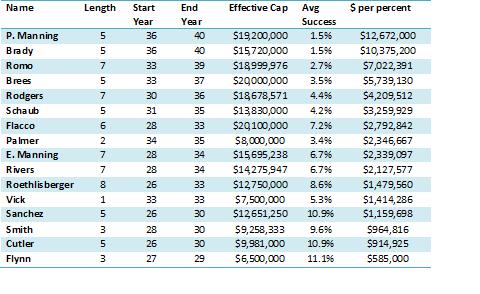As the Falcons fell to 1-6 with the 37-10 loss to a Rams team that was on a three game skid, I was inspired to turn towards 2020 to look at how this Falcons team and their terrible defense can potentially make a change.
Currently, they’re slated to be $8.7 million over the cap and largely because of some massive investments at the top of their salary cap. And that’s before you take into account the $9.6 million team is currently projected to spend on their 2020 draft picks.
Matt Ryan and Julio Jones will consume 27% of their cap in 2020. Steve Young and Jerry Rice set the Super Bowl record for a champion’s Top 2 cap expenses at 21.84% in 1994. Young’s cap hit of 13.1% is the highest cap hit for any Super Bowl champion in the 25 seasons of the salary cap era.
An astute 49ers organization re-signed 17 players in December 1993 to avoid the cap, so they kind of cheated the cap. This makes Matt Ryan’s 16.8% cap hit, and the QB market rates in general, even more crazy.
If you add Jake Matthews, Grady Jarrett, and Desmond Trufant, the Falcons top 5 cap hits will consume 50.6% of the cap. The Super Bowl record was set by the 2002 Bucs. Warren Sapp, Brad Johnson, Simeon Rice, Derrick Brooks, and Jeff Christy combined for 38.4% of the cap.
If you add Alex Mack, Deion Jones, Devonta Freeman, Mohammad Sanu, and Ricardo Allen, the Falcons top 10 cap hits consume a shocking 73.6% of the cap.
The 2015 Broncos have the cap era record for champions in spending 62.3% of the cap on Peyton Manning, Demaryius Thomas, Ryan Clady, Von Miller, Demarcus Ware, Aqib Talib, Louis Vasquez, Emmanuel Sanders, and Chris Harris, Jr.
Demaryius Thomas’ cap hit of 9.2% is the record for wide receivers and #2 cap hits on champions. Jones’ cap hit of 10.2% will be a percentage point higher.
When you consider why the Falcons defense is so horrible, you can look towards the low-percentage situation they’ve put themselves in. They were heavily reliant on too many low-probability things working out for them.
For offensive skill players, Ryan, Jones, Freeman, and Sanu consume 35.8% of the cap. Add Matthews and Mack, the team has 49% invested in six veteran offensive players. The team spent a first round pick in 2018 on another receiver, Calvin Ridley. There is so much invested in this offense and it has impacted the defense.
Over the last two seasons, an organization that has known defense was a weakness since their Super Bowl loss to the Patriots, has invested three first round picks in offensive players over the last two years: Ridley, plus linemen Chris Lindstrom and Kaleb McGary.
In the five drafts since 2015, the team has only had 32 draft picks, that’s eight less than the league average. Eight less opportunities to draft defensive players and instead have to take a larger chance on an undrafted player.
The team has become fully committed to their strategy for success: pass for more production than anyone else. It’s a valid idea for a strategy for success, but we’ve already seen Drew Brees play out this 7-9 reality when his defenses were terrible from 2012 through 2016.
It feels like some tough decisions should have been made over the last couple years like recognizing the crazy investment totals in 2020 and the likely need to trade Julio Jones who wanted a new contract.
He’s having a good season by anyone’s standards, but before this week, he’s already a bad value for the team as he’s produced about $12 million in value versus his $22 million average per year. That’s $22 million number is based on the player Jones was in his late-20s, the end of a receivers prime years. It’s not based in the reality of who he will be in the future.
Trufant is producing $9.4 million in value below his contract value, so two big investments aren’t working out great. Add the rest of the group in though too. Jarrett, Mack, Allen, Ryan, Matthews, Freeman, and Deion Jones are all producing below their value. Sanu is the only player in the Top 10 producing more than his contract value.
This is just an unfortunate truth of NFL contracts. Most second contracts will be proven to be bad values by Jason’s standard because of the extremely undervalued prices of everyone who basically contributes at all while on a rookie contract.
What the organization seemed to fail to recognize in all of this is the value that Kyle Shanahan provided to the organization during that 2016 season. Ryan and Jones had similarly massive cap hits during that year, but because of that trademark Shanahan offense, he was able to pull out the most extreme value out of that offense. The defense was still poor, but Shanahan made their offense the NFL’s highest scoring, not just the most prolific at passing.
That offense was ranked fifth in rushing with Freeman and Tevin Coleman leading an attack that ran for 4.6 per carry, rather than the 3.8 it’s churning at this year. It’s no secret that the Shanahan offense is terrific.
Even with Shanahan though, this 2020 team would be in a lot of trouble. The issue with spending $146.7 million on your Top 10 is an over-reliance on accepting sub-optimal players on the rest of the roster due to costs. Atlanta already has $3 million in dead money costs next year with potentially more dead money charges to come considering the need to get under the cap next year.
If the salary cap is $200 million, the Falcons have $51 million, or just 25.5% of the cap, to spend on the 43 other roster spots. That’s just $1.19 million or 0.59% of the cap per player to invest.
The team currently has just 40 players under contract AND they’re already projected to be over by $18.3 million when factoring in draft picks!
After the Top 10 players, the team has 12 players making over $1 million. When factoring in those 12 players, the Top 22 cap hits for the Falcons consume all but $1.95 million of a $200 million cap.
So an NFL team has 53 players on a roster, the Falcons are spending $198.05 million on 22 players, plus dead money. This leaves the team with $1.95 million for 31 players, which leaves $62,903 per player.
If the team does a complete fire sale and moves on from Mack, Freeman, Sanu, Allen, Keanu Neal, and Allen Bailey, that saves $32.125 million, which brings that total to $34.075 million in cap space. That’s still just $1.1 million per player, which, especially considering all the talent they’d be ridding themselves of in that scenario, likely makes them one of the worst teams in the NFL next year.
I have no idea what the Falcons are going to do to right the ship right now and I don’t think they do either.
Welcome to salary cap hell. We’ve been waiting for you.
Zack Moore is a certified NFL agent, a writer for OverTheCap.com and OnnitGymMMA.com, as well as the author of “Caponomics: Building Super Bowl Champions,” a book that breaks down how Super Bowl champions are built in the NFL’s salary cap era and discusses how NFL front offices can best allocate resources to create successful teams.
You can follow him on Twitter at @ZackMooreNFL. You can subscribe to The Zack Moore Show podcast here.



